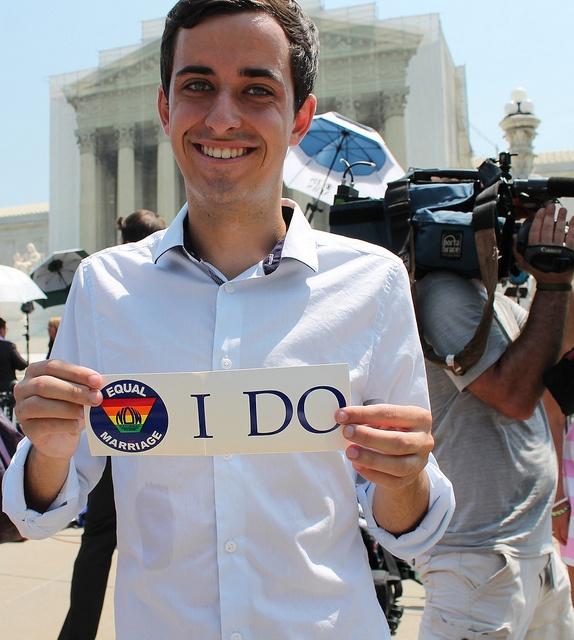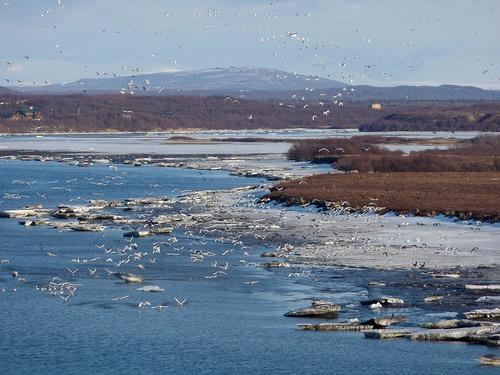Extended Power Outage Tests High-Performance House


My family experienced a five-day power outage last December after a Maine ice storm. The temperature of our neighbor's house dropped to near freezing after one night. Despite having below freezing temperatures, even subzero weather, our house remained pretty comfortable. The indoor temperature dropped by only 2 degrees daily, with no supplemental heat. While neighbors scrambled to hook up generators and space heaters to keep the pipes from freezing, we knew our house wouldn't freeze. What is our secret?
We live in a house where the design was guided by the Passive House Standard at Belfast Cohousing & Ecovillage. "Build it nice and tight, face it to the south, not towards the road, and put most of your glass on the south," explains GO Logic foreman John White. GO Logic, the builder of our house has designed and constructed two Passive House-certified homes in Maine.
The solar orientation and south-facing windows make a noticeable difference on sunny days. During the only sunny day of the outage, the indoor temperature in our home increased by 7 degrees. Even with the temperature below zero outside, our indoor temperature will increase by 5 to 10 degrees Fahrenheit throughout the course of the day. With a solar system, the homes can be near net-zero, meaning that the solar array can generate as much as the house consumes over the course of a year.
On sunny winter days, our home can easily gain 10 degrees from the sun alone. Because the angle of the sun is lower in the winter, the sunlight streams in. During the summer, the sun is higher in the sky and doesn't heat the space as much. Although the builder, GO Logic, believes the house meets the Passive House Standard, it has not been certified.
Passive House Standard for an energy-efficient home
This standard ensures houses meet a set of criteria for space-heating energy demand, primary energy demand and airtightness. GO Logic uses a blower door test to ensure the house performs to the Passive House Standard of less than or equal to 0.6 ACH at 50 Pascal pressure. That means that there would be fewer than 0.6 air-changes per hour in the house with a 50 Pascal pressure, which is five times the pressure our house is likely to experience on a cold winter day.
Passive House Standard is popular in Europe, where 15,000 homes have been constructed in the last 10 years. As is often the case with energy efficiency, the Passive House Standard has been much slower to catch on in the U.S. However, it has furthered the green building industry by quantifying the impact of energy-efficient building materials.
"The people at Passive House took [energy efficiency construction] ideas and were much more scientific about the physics of how buildings work," says Alan Gibson, a principal of GO Logic. "It is revolutionary in that it has spawned a new way of thinking around high performance buildings.
"The biggest thing they developed was the energy model spreadsheet that determines how much energy a building gains or loses. It’s all based on physics and math.You have a section of wall with certain properties and materials, and you can tell how much heat is going to move through that wall over time. If you put that all together and determine every way a building can gain or loose energy, you create a comprehensive model for how a building is going to perform."
Gibson believes that quantifying the properties of energy efficient building materials helps boost the market for these materials. "If you have a triple-glazed window and you compare it to a double-glazed window, you can quantify the difference in durability, comfort and moisture," explains Gibson. "All of a sudden, people wanted more triple-glazed windows, so the industry responded by producing more. When supply increases, they become cheaper."
Indoor air quality
"I think the Heat Recovery Ventilation (HRV) system is what revolutionized these houses," says Brian Hughes, a carpenter for GO Logic. "People have been building super-tight, insulated houses since the 1950s. The problem was that the air quality wasn’t good and people didn’t try having a super-tight buildings again until they figured out that with the heat exchanger, you can use a tiny bit of electricity and have really high air quality."
Our house has a Zehnder HRV system, which brings in filtered outside air and captures heat from stale indoor air before it leaves our house. Airtight homes need fresh air to ensure high indoor air quality and avoid humidity and mold issues. HRV systems are an energy-efficient solution that ensure excellent indoor air quality, while capturing up to 90 percent of the heat.
"There is the pocketbook savings [associated with a high-performance house], but there is also the social aspect of it too--making a conscious choice to live in a more sustainable house," adds White. "We are not conditioned to think that way. We are conditioned to think it’s private property and I can do what I want, as long as I’m not breaking the law. If gas is cheap, why would I care how much I use?"
Image Credit: Belfast Cohousing & Ecovillage
Sarah Lozanova is a regular contributor to environmental and energy publications and websites, including Mother Earth Living, Green Building & Design, Triple Pundit, Urban Farm, and Solar Today. Her experience includes work with small-scale solar energy installations and utility-scale wind farms. She earned an MBA in sustainable management from the Presidio Graduate School and she resides in Belfast Cohousing & Ecovillage in Midcoast Maine with her husband and two children.
Pinsent Masons takes up gender balance challenge


International law firm Pinsent Masons has launched 'Project Sky', a programme aimed at achieving an improved gender balance in the firm's partnership and senior leadership team by removing any barriers to the progression of women to the highest levels within the business.
Project Sky, which is being led by employment partner Linda Jones, will set in train a number of initiatives with the ultimate aim of ensuring that women will comprise 30% of the firm's partnership, with a first milestone of reaching 25% by 1 May 2018.
The project will ensure that over time Pinsent Masons improves the balance of male and female representation in its partnership while making certain the firm's policies and working practices encourage and support talent across the entire business irrespective of gender.
The launch of Project Sky follows consultation with a significant number of staff at the firm on the issue in conjunction with Female Breadwinners, a leading consultancy specialising in gender issues. It will involve a number of initiatives to promote: more transparent career development; greater accessibility to flexible or agile working; more structured support around parental leave and training to help identify and address subconscious bias.
Practice group heads have also been asked to consider whether the gender balance of shortlists for promotion to Partner, Legal Director and Senior Associate positions reflect the composition of their teams.
Linda Jones, a Partner in the Employment practice and leader of Project Sky, commented: "Currently more than 20% of the Pinsent Masons partnership is female while two out of nine people on our Board are women, benchmarking well against comparable firms in the professional services sector. However, around 70% of the lawyers coming into the business are female while the proportion of women in partnership is fairly static. If we are to properly utilise that talent changes are required. The steps we are taking are aimed at improving our gender balance at senior levels but will ultimately mean better working practices for all our staff."
Apple CEO Tim Cook Tells Climate Deniers to Take a Hike


Tim Cook, Apple's CEO and successor to Steve Jobs, is generally known as a man who, unlike his predecessor, has a cool head and does not let his emotions influence his decisions or his behavior on the job. But that is apparently not the case when it comes to global warming. Nothing seems to get him steamed up more than a group of climate deniers, like the group that recently attended Apple's annual shareholder meeting last Friday.
In attendance were representatives from the National Center for Public Policy Research (NPCCR), a self described “conservative think tank and policy institute,” that issued a statement before the meeting suggesting that the company renounce any environmentally-based activities that don't contribute directly to the bottom line.
The proposal, which was submitted by NCPPR General Counsel Justin Danhof, said: "We object to increased government control over company products and operations, and likewise mandatory environmental standards. This is something [Apple] should be actively fighting, not preparing surrender."
Danhof went so far as to suggest that this proposal be taken up as a pledge to be voted on by shareholders in the meeting. The proposal was voted on and soundly rejected, but not before Cook took the opportunity to comment. "We do a lot of things for reasons besides profit motive," he said. "We want to leave the world better than we found it."
Those objecting to the company's principled stand on the environment, said Cook, were welcome “to get out of the stock.”
Danhof was quick to issue a response on the NCPPR website.
"Mr. Cook made it very clear to me that if I, or any other investor, was more concerned with return on investment than reducing carbon dioxide emissions, my investment is no longer welcome at Apple,” Danhof said.
Danhof's suggestion to amend “Apple's corporate documents to indicate that the company would not pursue environmental initiatives that [don't] have some sort of reasonable return on investment--similar to the concession the National Center recently received from General Electric,” was “greeted by boos and hisses from the Al Gore contingency in the room.”
Danhof summed the situation up as follows: “Apple is as obsessed with the theory of so-called climate change as its board member Al Gore is. The company's CEO fervently wants investors who care more about return on investments than reducing CO2 emissions to no longer invest in Apple. Maybe they should take him up on that advice."
Of course, this shows nothing of the kind. What it does show is that executives like Tim Cook can now safely make statements like this, recognizing the extent that climate change deniers like Mr. Danhof are becoming increasingly marginalized. They no longer represent anything resembling a majority of Americans and are instead increasingly recognized as a fringe element, clinging tenaciously to narrow self-interests, completely out of touch with reality at a time of global crisis.
This outburst from La-La Land occurred on the same day that a joint document from the National Academy of Science and the United Kingdom's Royal Society came out, stating that these top-ranked scientists are more certain than ever the human role in climate change is substantial and real. The document states that: “Climate change is happening. We see it in temperature, we see it in the melting ice, and we see it in sea-level rise.”
Meanwhile conservatives in Mr. Danhof's camp have found themselves really stretching to contort the news to spinoff statements like, “ObamaCare is causing a catastrophic change to our health care climate and Harry Reid is denying it. Denier!” in a somewhat desperate attempt to remain relevant in yet another losing battle.
Image courtesy of Apple
RP Siegel, PE, is an inventor, consultant and author. He co-wrote the eco-thriller Vapor Trails, the first in a series covering the human side of various sustainability issues including energy, food, and water in an exciting and entertaining format. Now available on Kindle.
Follow RP Siegel on Twitter.
Caesars Supports Marriage Equality with a Wedding Giveaway


New Jersey became the fourteenth state to legalize gay marriage last October, and now Caesars Entertainment is joining in the festivities, offering one lucky couple an extravagant $50,000 wedding package at one of the company’s Caesars, Harrah’s, Bally’s and Showboat resorts and casinos in Atlantic City.
Dubbed the “Love Is Love” giveaway, the prize features a wedding ceremony and reception for 100 guests, a cocktail hour, dinner, custom cake designed by celebrity chef Deb Pellegrino, two-hour open bar, photographers, flowers and entertainment. The winning couple will also receive bachelor or bachelorette parties, a day-after brunch for up to 50 guests and luxury accommodations for their guests and themselves.
To enter the contest, couples have until March 14 to make a video explaining why they’re the best duo to win the prize, and post it to Instagram tagging @Total_AC and using the hashtag #LoveIsLoveInAC. All Instagram users are invited to vote in the contest, searching the #LoveIsLoveInAC hashtag and “liking” their favorite video. A panel of judges will select the winning couple from the five most “liked” videos.
While naysayers may be quick to criticize Caesars Entertainment’s “Love Is Love” contest as a publicity stunt rather than a political statement advocating marriage equality, the company touts its long record supporting the LGBT community: Caesars scored 100 percent on the Human Rights Campaign’s Corporate Equality Index for six consecutive years and partners with the Gay and Lesbian Alliance Against Defamation, International Gay and Lesbian Travel Association, National Lesbian and Gay Journalists Association and Human Rights Campaign.
Whether you think Caesars cares about equal rights for the LGBT community or is simply looking for good PR, it is becoming increasingly clear that LGBT discrimination is bad for business.
Last week, Arizona Gov. Jan Brewer vetoed a bill that would have given the state’s business owners the right to refuse service to gay and lesbian customers because of their religious beliefs. But before Brewer could strike down the controversial legislation, the Hispanic National Bar Association said it cancelled plans to hold its annual convention in Arizona next year, and the National Football League, set to host the 2015 Super Bowl at the University of Phoenix’s stadium, started looking for alternative venues in case the bill was signed into law. JPMorgan Chase, one of Arizona’s largest employers, also took a stand against the bill, and tech companies like Apple and AT&T urged the governor to veto it, saying the law was discriminatory and would damage the state’s business climate.
While it’s challenging to call a company that encourages the unhealthy behavior of gambling, smoking and drinking socially responsible, it is refreshing to see a corporation make such bold statements in support of marriage equality in a campaign, rather than simply quietly acknowledging the importance of acceptance and nondiscrimination in its corporate policy.
Also last week, Caesars received a climate leadership award from the Environmental Protection Agency for achieving its goals to reduce greenhouse gas emissions. This accomplishment, along with Caesars’ pro-marriage equality giveaway contest, demonstrates that casino companies can strive for good corporate citizenship–just in their own way.
Image credit: Flickr/Elvert Barnes
Passionate about both writing and sustainability, Alexis Petru is freelance journalist based in the San Francisco Bay Area whose work has appeared on Earth911, Huffington Post and Patch.com. Prior to working as a writer, she coordinated environmental programs for Bay Area cities and counties. Connect with Alexis on Twitter at @alexispetru
Copper, Salmon and Healthy Waters: EPA Puts a Halt to Pebble Mine Project


Any form of economic decision-making–whether to invest in a coal mine or solar power project, to buy this brand of good or product or that–comes replete with trade-offs, particularly when it comes natural resource development. We rely on markets and private sector businesses and investors, working within the context of public sector governance, to guide and approve, or disapprove, of those decisions.
Such trade-offs are clearly in evidence in Alaska's Bristol Bay watershed, one of the world's richest, most productive and few remaining wild salmon fisheries. Bristol Bay is also the site of the proposed Pebble Mine, envisioned by project developers as one of the world's largest open-pit copper mines.
Concerned about Pebble Mine's impact on the Bristol Bay fishery and watershed–which provides basic ecosystem services, such as water, food and shelter, and sustainable livelihoods for communities throughout the area, the Environmental Protection Agency (EPA) this past week invoked Section 404(c) of the Clean Water Act in initiating a process “to identify appropriate options to protect the world's largest sockeye salmon fishery in Bristol Bay, Alaska from the potentially destructive impacts of the proposed Pebble Mine.”
The Pebble Mine: A huge copper resource
The EPA's action temporarily puts a halt to the U.S. Army Corps of Engineers approving a permit that would allow the Pebble Limited Partnership (LP) to move forward with its plans to develop the Pebble Mine. Those plans envisage a five-year construction phase followed by an initial 25 years of production. Three subsequent development phases of 20 years each are also held out as a possibility.
Located in southwestern Alaska on national public land some 230 miles southwest of Anchorage as the crow flies, the Pebble Mine site is remote. Developing a mine there would require building extensive infrastructure--roads, power, water, even a deep-water port. What lies beneath the surface is said to be one of the world's largest copper porphyry deposits, one that also holds substantial amounts of molybdenum and gold.
The scope and scale of the deposit is humongous, as would be its effect on ecosystems across the area and far beyond. As is typical of such deposits, the actual copper, gold and molybdenum-bearing minerals are disseminated thinly throughout the vast area of bedrock.
As the Pebble Partnership notes on its website, "Ore from this type of deposit typically contains less than 1 percent copper by volume, sprinkled throughout the rock like fine grains of sand. That means miners will dig a very wide, very deep hole--projected to be two miles wide and several thousand feet deep--to extract and then process millions of tons of rock. All the excess rock--estimated at some 10 billion tons--along with allowed discharge chemicals would be stored indefinitely in two artificial lakes behind massive earthen dams. The largest of these dams would be 740 feet (230 m) tall and 4.3 miles (6.9 km) long.
Copper, jobs and state revenues
Imports meet 35 to 40 percent of U.S. copper demand at present. Developing the Pebble Mine would boost U.S. copper production by 20 percent, according to an economic study of the project commissioned by the Pebble Partnership and conducted by IHS Global Insight. Moreover, the Pebble Partnership highlights, exploiting the Pebble copper deposit could boost Alaska state government revenues an estimated $136 billion to $180 billion a year in taxes and royalties, making the Pebble Mine one of the top five contributors to the state treasury. Tax revenue for the local Lake and Peninsula area would increase by an estimated 600 percent.
IHS Insight researchers also project that the copper, gold and molybdenum mine could support more than 16,000 jobs nationwide during construction, including nearly 5,000 jobs in Alaska alone during the construction phase with an average annual wage of $63,500 per year. "Pebble operations could support nearly 15,000 jobs in Alaska and the Lower 48; and potential subsequent development phases could support more than 16,000 jobs nationwide," according to the report.
As Pebble LP CEO John Shively stated:
“Pebble is a substantial multi-billion dollar state asset as shown by this report, which provides great insight regarding the long-term positive economic impacts the project could have for the region, state and the Lower 48. For perspective, the report indicates Pebble development alone would pay more in annual taxes to the state than the entire fishing industry combined. This clearly shows Pebble development could be an important economic driver for Alaska’s future.”
Copper vs. local communities, fisheries, and a watershed
So, as Shively points out, a pound of copper is worth a lot more than a pound of fish, even wild salmon. But does Pebble LP's studies and analysis tell the whole story? The EPA, as well as other opponents of the project, believe it doesn't, not by a long shot.
Explaining the EPA's decision to invoke Section 404(c) and put a temporary halt to mine development, Administrator Gina McCarthy stated,
“Extensive scientific study has given us ample reason to believe that the Pebble Mine would likely have significant and irreversible negative impacts on the Bristol Bay watershed and its abundant salmon fisheries.“It’s why EPA is taking this step forward in our effort to ensure protection for the world’s most productive salmon fishery from the risks it faces from what could be one of the largest open pit mines on earth. This process is not something the Agency does very often, but Bristol Bay is an extraordinary and unique resource.”
Regional Administrator for EPA Region 10 Dennis McLerran notified the U.S. Army Corps of Engineers, the Alaska state government and the Pebble Partnership that it has initiated action under Section 404(c) of the Clean Water Act.
McLerran not only highlighted the economic value of Bristol Bay's sockeye salmon fishery, but the deep, lasting social and ecological value of the Bristol Bay watershed to communities throughout the area.
“Bristol Bay is an extraordinary natural resource, home to some of the most abundant salmon producing rivers in the world. The area provides millions of dollars in jobs and food resources for Alaska Native Villages and commercial fishermen.
He also highlighted the threats and losses–economic, social and ecological–that would result if the Pebble Mine were to be developed as proposed.
“The science EPA reviewed paints a clear picture: Large-scale copper mining of the Pebble deposit would likely result in significant and irreversible harm to the salmon and the people and industries that rely on them.”
The EPA's decision is based on data gathered as part of its Bristol Bay ecological risk assessment and mine plans Pebble LP submitted to the Securities and Exchange Commission (SEC).
Documenting the findings of scientific investigators, the EPA in January released its “Assessment of Potential Mining Impacts on Salmon Ecosystems of Bristol Bay, Alaska.” According to the EPA:
“The assessment indicates that the proposed Pebble Mine would likely cause irreversible destruction of streams that support salmon and other important fish species, as well as extensive areas of wetlands, ponds and lakes.”
A natural capital approach to resource extraction
What's more valuable, and to whom, and what are the overall social and ecological, as well as economic, impacts of such economic development projects? Given the profound, long-lasting impacts of any such project on the ecosystems that underlie the fundamental health and well-being of communities and society, these are questions that need to be comprehensively and thoroughly assessed in an open, inclusive and transparent process.
In a bygone era, any disputes over developing a gigantic mine probably would have been settled directly between locals and mine developers. They would likely have involved much money changing hands to influence opinions, as well as a good degree of intimidation, if not outright armed conflict between opposing camps. Ecological considerations, aside from the direct impact on the fishery and possible effects of water toxicity many years in the future, would probably have received little if any consideration.
Times have changed, and technology and society along with them. So even has economic thinking. Today, proponents of natural capital envision a system of economic decision making that entails evaluating the social and ecological costs and benefits to natural resource use and development.
Critically, from a broader societal perspective, the issue of how various costs and benefits would be distributed locally and more broadly across to local communities and fundamental ecosystems and services, as well as business management and investors is a core aspect of the Natural Capital framework. It's an approach the EPA appears to be taking in its decision to put a halt to the permitting process, and one that needs to be undertaken in any mineral, energy or other natural resource extraction project.
Image of fisherman on Bristol Bay courtesy of Alaska Conservation Foundation
Image of Bristol Bay: Flickr/KatmaiNPS
I love Bristol Bay poster courtesy of Trout Unlimited
A Reply to the IOC’s Response on Human Rights in Sochi


On Feb. 10, as the 2014 Winter Olympics were about to kick off in Sochi, Russia, I wrote a post arguing that the International Olympic Committee (IOC) may have acted contrary to the U.N. Guiding Principles on Business and Human Rights (UNGPs), flowing from the IOC’s decision to allow Russia to host the 2014 Winter Games. That post was linked to by the Business & Human Rights Resource Center, which went on to request comment from the IOC. To my surprise, the IOC actually responded. Given that the IOC found the time to respond to me, I thought it only proper to return the favor.
The IOC’s response can be broken down into two basic arguments:
-
First, the UNGPs do not apply to the IOC because the IOC is not your run-of-the-mill corporation; and
-
Second, even if the UNGPs do apply, and to the extent that Russia engaged in human rights violations in preparation for the games (as others have documented and I summarized), the IOC complied with the UNGPs by addressing those violations.
The IOC is different
The IOC isn’t commercial. The IOC’s first argument appears to be that the UNGPs do not apply to the IOC because the IOC is unlike a “commercial company.” To illustrate, the IOC points out that its product is “a set of values symbolized by the Olympic rings,” rather than “a laptop or a smartphone.” Fine. But even if we agree that the IOC deals in “values” rather than, say, entertainment (and I’m not sure we should agree), I don't see how that is relevant.
Whether a business enterprise is obligated to comply with international human rights law does not turn on how similar that enterprise’s product is to a consumer electronic good. The UNGPs apply whether an organization sells petroleum, produce, prescription medication or anything else, and to imply that it is only the Apples of the world that are obligated to follow the UNGPs is to miss the point entirely. To accept the IOC’s argument would be akin to allowing Nestle to defend itself against allegations of human rights abuse in its supply chain because Nestle sells a “taste experience” rather than chocolate bars. The IOC had a duty to ensure that its business partners--in this case, the Russian government and the Russian government’s contractors--did not engage in human rights violations, and the way the IOC decides to define its product has no impact on that duty.
The IOC does a lot of good. The IOC also relies heavily on the fact that “the games are designed to bring lasting benefits to the host city and nation.” I do not doubt that--in fact, I experienced those benefits first hand when riding the Athens subway after the 2004 Summer Games (it beat your typical NYC commute, that's for sure). Yet, again, I question the relevance. Many major multinationals engage in extensive philanthropy; others have robust corporate social responsibility (CSR) programs. These are important facts that should be encouraged, and the IOC should likewise be applauded for its community revitalization efforts. However, those ancillary benefits have absolutely no bearing on the IOC’s or any other entity's obligations under the UNGPs.
The IOC didn’t “transact” with Russia. The IOC also states, almost off-hand, that its “engagement with a host nation is not a transactional relationship.” The relationship may or may not be explicitly transactional, but it is surely contractual and there are resultant obligations imposed upon both parties--implicitly or otherwise--once the IOC decides to award a particular games to a particular country. Whether Russia and the IOC literally exchanged payment for services is beside the point.
The IOC did what it could
The foregoing arguments notwithstanding, the IOC ultimately concedes that it “has a responsibility to defend human rights in games-related cases.” Its defense is twofold: that it sought certain “assurances” from Russia; and that it eventually intervened in the games-related cases I cited.
As the IOC acknowledges, it had a duty to take remedial action with respect to games-related human rights abuses (as it promised to do in 2011). That it did make efforts to intervene and remediate in certain instances is significant and commendable. Yet, as Human Rights Watch noted, “[w]hile the IOC’s late action is important, more workers would have benefited if it had acted sooner.” I am in no position to add anything to what HRW has already said on this point.
The more troubling point is the IOC's implication that seeking assurances from Russia somehow satisfied the IOC's human rights obligations. First, nothing about the Putin regime would suggest that a human rights commitment from the Russian government should be trusted or taken seriously. I am sure the IOC realizes that, which is perhaps why it attempts to hide behind the claims that the IOC is “not equipped to conduct its own investigation into allegations of human right abuses,” and that it is “first and foremost a sport organization,” which “must rely on information provided by NGOs and by government authorities in the host nation.”
I believe the IOC when it says that it takes its “obligation to defend human rights in games-related cases quite seriously and will continue to meet that obligation to the best of our ability.” Yet, it is disingenuous for the IOC to imply that it was powerless to discern the potential for serious human rights abuses in connection with a Sochi Winter Games, absent some indication of that risk from a third party. All of which, by the way, is moot, in light of the fact that, “[s]tarting in 2008, Human Rights Watch has regularly raised concerns with the IOC about abuses linked to the Russian government’s preparations to host the 2014 Winter Olympics in Sochi.”
In any case, the IOC was on notice, implicitly or explicitly, of the potential for games-related human rights abuses in connection with a Sochi Olympics, just as it was in Beijing.
Image credit: Flickr/{ QUEEN YUNA }
Los Angeles Shuts the Door on Fracking's 'Red Queen'


Last week, Los Angeles joined the growing list of cities and towns banning, at least temporarily, gas and oil fracking within their borders. The main concerns are over public health and water resource preservation, but economic impacts and property values also come into play. The news comes on the heels of yet another article in the mainstream press that paints a picture of the fracking industry as a swelling bubble that will make a loud and messy noise when it pops.
Part of the reason why the fracking industry is so bloated right now is something that our friends over at Fuel Fix have dubbed the "Red Queen" effect, after the fictional Lewis Carroll character, so let's take a look at the Los Angeles decision in that context.
The "Red Queen" effect
Fracking is short for hydrofracturing, a formerly unusual but now routine way to shake gas and oil deposits loose from shale formations by pumping a chemical brine underground.
The "Red Queen" effect refers to the relatively short lifespan of fracking wells, which tend to reach peak production earlier than conventional wells. The industry is forced to drill thousands of new wells annually to compensate for the dropoff (Fuel Fix estimates about 6,000), and that's not even accounting for new production incentives that could arise if the Obama administration approves more export licenses.
The result of all this activity is more pressure on the industry to seek new drilling sites or re-explore disused sites, including those in heavily populated urban areas.
The Los Angeles fracking moratorium
That brings us straight to Los Angeles. As reported last Friday by Al Jazeera America, the Los Angeles City Council voted to establish a moratorium on fracking as well as other "well stimulation" activity within Los Angeles County.
The next step will be to have the city's legal team craft an ordinance and set a date for the moratorium to go into effect.
The pressure is on to act quickly because, while LA might not appear to be a hotbed of drilling activity, there are in fact a number of active drilling sites within the city, and it is dotted with thousands of inactive sites that could be reactivated.
According to the Al Jazeera report, local activists have already taken note of fracking activity within Los Angeles, as well as an oil well treatment involving acid injection.
Hopping on the fracking ban bandwagon
If and when the Los Angeles moratorium goes into effect, it will be the largest city in the U.S. to take that action.
Meanwhile, in the East Coast, the Delaware Watershed organization Keep Tap Water Safe has been keeping a running tab on activity on local fracking bans, as well as moratoriums and organized movements to ban fracking.
As of last month, the group's list included the City of Dallas in Texas, Hawaii Island in Hawaii, New Mexico County in New Mexico, and scores of local governments in New York State.
Significant movement is also afoot in Pennsylvania. Late last year, the Pennsylvania Supreme Court affirmed a lower court decision striking down a new statewide zoning plan that would have prevented local governments from restricting fracking within their borders.
The fracking bubble swells...
Mainstream media has been warning about the fracking bubble for at least two years. In May 2012 we took note of the financial travails of the major fracking industry player Chesapeake Energy Corp. as reported by the New York Times, Reuters, and National Public Radio.
Last year Rolling Stone and The Wall Street Journal also chimed in on Chesapeake, as the focus of persistent weaknesses in the natural gas industry.
Also last August, Bloomberg added to the pile with an in-depth article on the negative impact of fracking operations on local property values. That includes properties that host fracking operations as well as their neighbors.
The latter point was underscored with darkly hilarious irony just last week, when it was revealed that ExxonMobil chairman and CEO Rex Tillerson--ExxonMobil is among the largest players in the fracking industry, if not the largest--sued to stop construction on a fracking-related water tower adjacent to his property. Part of the concern was truck traffic related to water transportation for fracking operations, in addition to the unsightliness of the 160-foot tower itself.
Just last week, Bloomberg chipped in again a real bombshell report on the rising cost of oil fracking wells, reiterating the point that fracking wells peak more quickly than their conventional counterparts, leading to pressure on the industry to drill thousands of new wells every year.
Image (cropped): by theilr
Walmart's Concept Hybrid Truck Would Make a More Efficient Fleet


While the fuel economy of cars has increased dramatically over the last few decades, the fuel economy of semis has merely inched its way up. Two interesting developments may improve things for these gas-guzzling vehicles that get between 4 and 8 miles per gallon. President Barack Obama recently announced greater EPA standards for the fuel efficiency of heavy-duty trucks, and Walmart unveiled its futuristic next-generation concept truck.
The cab of the Walmart Advanced Vehicle Experience (WAVE) concept truck looks reminiscent of a bullet train, with a sleek, aerodynamic appearance that blends into the trailer. It features a microturbine hybrid power train with an electric motor and a battery. Because the front end is so tapered, the driver sits in the middle and the entry door slides open. The innovative trailer is made of 53-foot-long sheets of carbon fiber and is the first trailer to be made out of this strong and lightweight material.
The WAVE truck was created in partnership with Peterbilt Motors Co., Great Dane Trailer and Capstone Turbine Corp. It is part of Walmart's fleet efficiency program for its 7,000 trucks, with a goal to double fleet efficiency by 2015, compared to its 2005 baseline.
It is testing the Walmart Supercube, trucks that haul 30 percent more goods in the same footprint. In addition, Walmart is testing alternative vehicle fuels, including natural gas and synthetic fuel from animal fat, grease and vegetable oil. According to its 2013 sustainability report, Walmart has already boosted efficiency by 80 percent by purchasing more fuel-efficient trucks and by finding ways to deliver more goods while driving fewer miles. This resulted in savings of nearly $130 million and nearly 103,000 metric tons of CO2 emissions.
Walmart has harvested the low-hanging fruit of fleet efficiency, and the goal is pushing the company to utilize partnerships with truck and component manufacturers to create prototype tractors, including hybrid assist, full-propulsion hybrid and wheel-end hybrid assist. Ambitious sustainability goals are designed to push companies beyond their comfort zones, to encourage innovation, even if the fruits won't be reaped in the short-term. The carbon fiber trailer in the WAVE concept truck is a great example, trimming 2 tons from the vehicle.
Carbon fiber consists of extremely thin fibers that are twisted together and coated with resin or plastic. This creates a composite material that is much lighter than steel, but has similar strength. Compared to aluminum, carbon fiber is lighter, has similar corrosion-resistant properties and yet is more durable. Carbon fiber is used in spacecraft, satellites, and some race cars and can withstand high stress. Amory Lovins has been urging the auto industry to utilize carbon fiber materials for years, touting its ability to reduce fuel consumption due to its light weight, while boosting safety. What's not to love about carbon fiber?
The auto industry has been slow to utilize this material due to its cost. Some of the strategies for lowering its cost include identifying lower cost raw materials, advancing technology to convert raw materials into carbon fiber, and testing low-cost carbon fiber design and capabilities. The Corporate Average Fuel Economy (CAFE) standards for the auto industry will help motivate faster adoption of this material, which has been starting in the luxury car market. Ramping up production and use of this material will lead to falling prices and greater use.
With just a video announcement of the WAVE concept truck, next steps are unknown. In the meantime, we'll be dazzled by the brief images of this sleek truck.
http://www.youtube.com/watch?v=iTTgxqZqTaA
Image credit: Youtube
Sarah Lozanova is a regular contributor to environmental and energy publications and websites, including Mother Earth Living, Green Building & Design, Triple Pundit, Urban Farm, and Solar Today. Her experience includes work with small-scale solar energy installations and utility-scale wind farms. She earned an MBA in sustainable management from the Presidio Graduate School and she resides in Belfast Cohousing & Ecovillage in Midcoast Maine with her husband and two children.
Bing to Put Brazil's Favelas on the Map


How can you provide social services or start a new business when your city doesn't even show up on a map? That's the reality for millions of Brazilians living in favelas, or shantytowns, in Rio de Janeiro: Less than 1 percent of these densely populated urban areas have been mapped, according to Microsoft search engine Bing.
But the Google competitor hopes it can put Rio's favelas on the map, embarking on a long-term project to bring its computational power and mapping infrastructure to the city set to host this year's World Cup and the 2016 Olympics. Bing announced its new initiative during February's Global Innovation Summit in San Jose, Calif.
Is seeing their homes on a Bing map really a top priority of favela residents, or are they more concerned with meeting their daily needs and obtaining access to electricity and clean water?
This was a question posed by a reporter during an interview with Bing's Senior Director Stefan Weitz on Bloomberg Television's Bloomberg West, and reflects the developed world's naiveté regarding the real needs and concerns of developing countries and how technologically advanced these nations actually are.
Calling favelas shantytowns or slums is a misnomer, Weitz said. While favelas previously earned a reputation as dangerous, impoverished communities, recent government programs have reduced crime and increased services in the areas.
Eighty percent of those who live in these favelas in Rio, for example, are middle class, Weitz said. These are actually places that have 1 percent GDP in Brazil and have a tremendous penetration of mobile devices today.
In fact, Weitz said, 90 percent of favela residents under 30 have Internet access on their mobile devices; access to computers and the Internet is not an issue. In many cases, many favelas residents will not have electricity in their homes, but will have a cell phone.
How exactly will Bing's mapping efforts empower favela residents? Once Bing develops the mapping infrastructure, Brazilian entrepreneurs can build on top of that, Weitz said, using the map to attract new customers to an existing business or starting a company that incorporates the mapping platform.
For example, Weitz went on to say, Nigerians use Facebook as a commerce platform, not simply as a social media tool, where they find jobs and make payments to local businesses.
Part of this is building a scaffolding, a "skeleton" if you will, so people can actually build applications and services that make sense for those populations in these places, he said.
Weitz recognized that the company's mapping project is just the technical piece of the overall solution to empowering people in favelas; nongovernmental organizations, government and entrepreneurs have been working on the ground in these communities for years.
But Bing's efforts may bring more rewards than simply economic ones.
"To see tinkle in [a resident's] eye when they can see their actual street or their address or their school show up on the Internet, on the devices they're using, that actually has dramatic social and psychological effects on these people," Weitz said.
Image credit: Flickr/Rob
Passionate about both writing and sustainability, Alexis Petru is freelance journalist based in the San Francisco Bay Area whose work has appeared on Earth911, Huffington Post and Patch.com. Prior to working as a writer, she coordinated environmental programs for Bay Area cities and counties. Connect with Alexis on Twitter at @alexispetru
Tesco in trouble over sales of unsustainable tuna


Britain’s biggest supermarket, Tesco, has been accused of selling unsustainable tuna by stocking a cut-price brand called Oriental & Pacific (O&P).
O&P tuna is caught using the purse seine net method which catches other species in its path such as turtles, sharks and rays. More selective forms of fishing, such as pole and line, mean that no other marine life is harmed in the process.
The supermarket was singled out for criticism last night in a documentary on Channel 4.
A Tesco spokesperson pointed out that the store’s own-brand tuna is 100% pole and line. “Customers have a great choice of sustainable tuna at Tesco,” they stated, adding that it would “insist that Oriental & Pacific makes a similar commitment to other branded suppliers who are working towards a more sustainable fishing policy”.
LDH, which owns Oriental & Pacific Tuna, refutes the claim that the brand “contains 'dirty' tuna”.
Picture credit: © Andrei Calangiu | Dreamstime Stock Photos